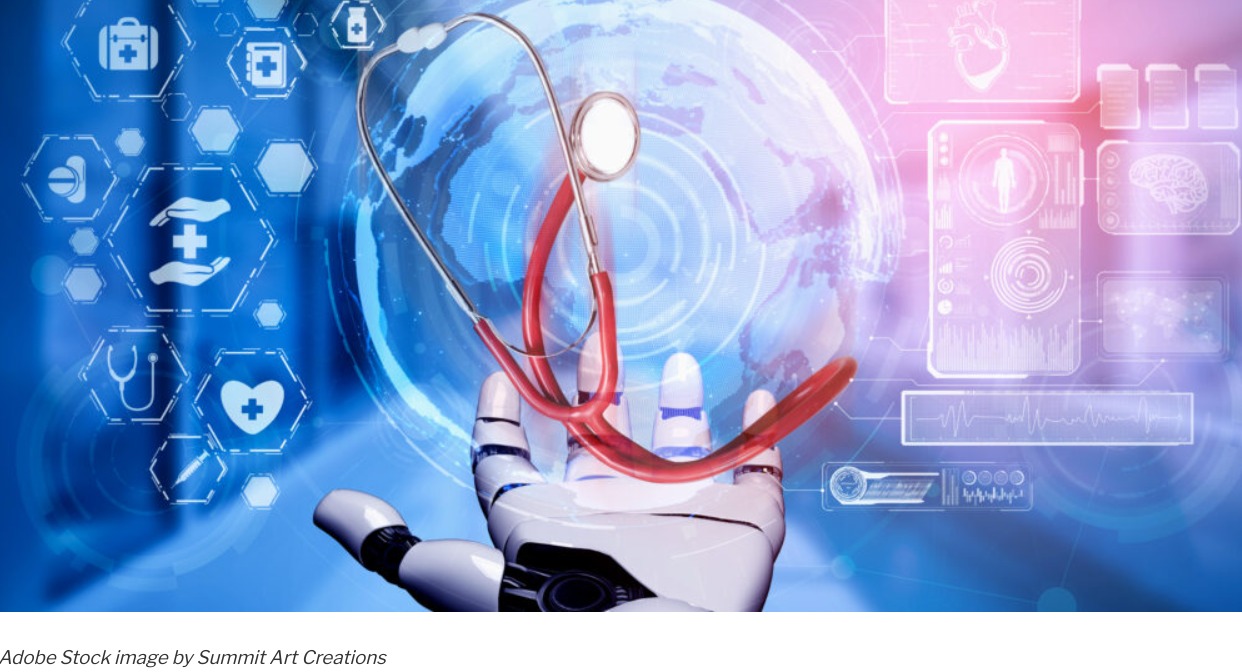Initially Posted in Security Sales & Integration
COVID-19 precipitated a radical shift in healthcare security, emphasizing the need to integrate human talent with robotic advancements.
The COVID-19 pandemic surprisingly changed the healthcare system: it also precipitated a radical shift in the security industry, emphasizing the need to integrate human talent with robotic advancements.
The need for integration isn’t just a reaction to the stresses on the healthcare system. Along with challenges, such as decreases in full-time staffing and increases in temporary staffing, comes a new awareness that healthcare organizations need innovative, modern security systems that deliver higher efficiency, better response times, and, ultimately, are more gentle on the bottom line.
The long-established idea of security, solely dependent on human personnel, is now accepting the revolutionary concepts of artificial intelligence (AI) and robotics, creating a new normal for how businesses protect their assets.
Healthcare Challenge Creates An Integrator Opportunity
One of the most significant difficulties emerging as the security industry evolves is the willingness to accept AI and robotics as complements and companions rather than substitutes for human security personnel.
The issue is whether or not the technology can match the ingeniousness and flexibility that the human brain offers for security. However, developmental breakthroughs in AI-guided systems, combined with human supervision, prove that AI is a tool that makes humans even more effective, thus laying down a convincing case for fusing both.
Advances in AI-assisted monitoring systems, such as cameras and video, also create new opportunities for integrators. AI-assisted security provides anticipatory and preemptive surveillance, allowing organizations to decrease video management tasks and improve response times significantly.
In addition, automated access control systems offer simplified entry protocols, preventing bottlenecks and enhancing security. These technological advancements open the door for integrators to expand existing services because they complement the genius of human intelligence rather than replace personnel.
These complementary services open the door for new customer conversations and broaden the possibilities for additional integrator, installer and dealer revenue streams.
New Healthcare Budgets Open Up For Virtual Security
After Sept. 11, 2001, the need for more aggressive security and virtual security solutions became apparent. Organizations became willing to pay for technologically advanced security officers to protect their facilities, personnel, vendors, and visitors. Security personnel teams were given new budgets and continual training on various artificial intelligence solutions.
Adding robotics to your customers’ security detail provides extraordinary exactitude and endurance, relieving the rigors of repetitive, tedious, labor-intensive duties. These robots are tireless in patrolling, and their state-of-the-art sensors and real-time reporting leave no area vulnerable.
The assisted labor with “walking the beat” reduces human effort, allowing customers to focus on areas where their expertise is required, such as critical decision-making tasks.
Implementing virtual security officers sets a high bar for security performance. This hybrid model meets the growing need for sophisticated, multi-level security that takes advantage of humans’ and robots’ strengths and exemplifies how a partnership of humans and machines can produce exceptional security coverage.
Healthcare Economic and Operational Benefits
Integrating AI-enhanced robotics with human security results in undeniable economic benefits, operational efficiency, and cost reduction. It’s getting more for your customers’ investment because automating routines means fewer resources are needed. AI-driven cameras, robotic patrols, and video management systems improve security and deliver a quick return on investment, often within two years.
Think about it: Robotic enhancement portends excellent benefits and relief, for even the most disciplined employees are prone to complacency. Robots don’t call out for their shifts, they don’t sit on their cell phones and watch YouTube videos while working, they don’t fall asleep and they don’t leave the site without permission.
Essentially, with robotics, employees will spend less time observing and more time responding to security events.
In addition to your client’s operational and economic benefits, technological advances require new employee capabilities. Human security officers must achieve a higher skill level to use the latest technology. The need for more tech-savvy personnel emphasizes the current trend of installing sophisticated security systems and underscores the sales opportunities.
Looking Ahead: The Future of Security Robotics
Trends and projections in the security industry point to the necessity of adding more AI and robotics to open new sales opportunities. Better security, reduced response times, and streamlined operations drive the need to expand technology-related security budgets.
Integrators must make the tech fit the business, for every company operates distinctly, and the value proposition changes from one organization to the other. What works for one customer may not work for another, so custom-formed security solutions are required.
It’s important to note that customers wishing to take advantage of these high-tech services may face hurdles regarding the initial cost increase and the need to convince shareholders to accept the upgrades. Integrators must ensure shareholders know the long-term benefits and that new security will enhance safety.
Conclusion
The fusion of expert human security with AI robotic advances indicates where the security industry is heading and how integrators can capitalize on this new frontier. In the future, it will be commonplace for robots and humans to work together to create safer and more secure environments—organizations embracing these ideals and turning them into new service offerings will reap the benefits.
Ryan B. Okerstrom is vice president of operations for the protective services group at Huffmaster and manages security services and remote monitoring.




0 Comments